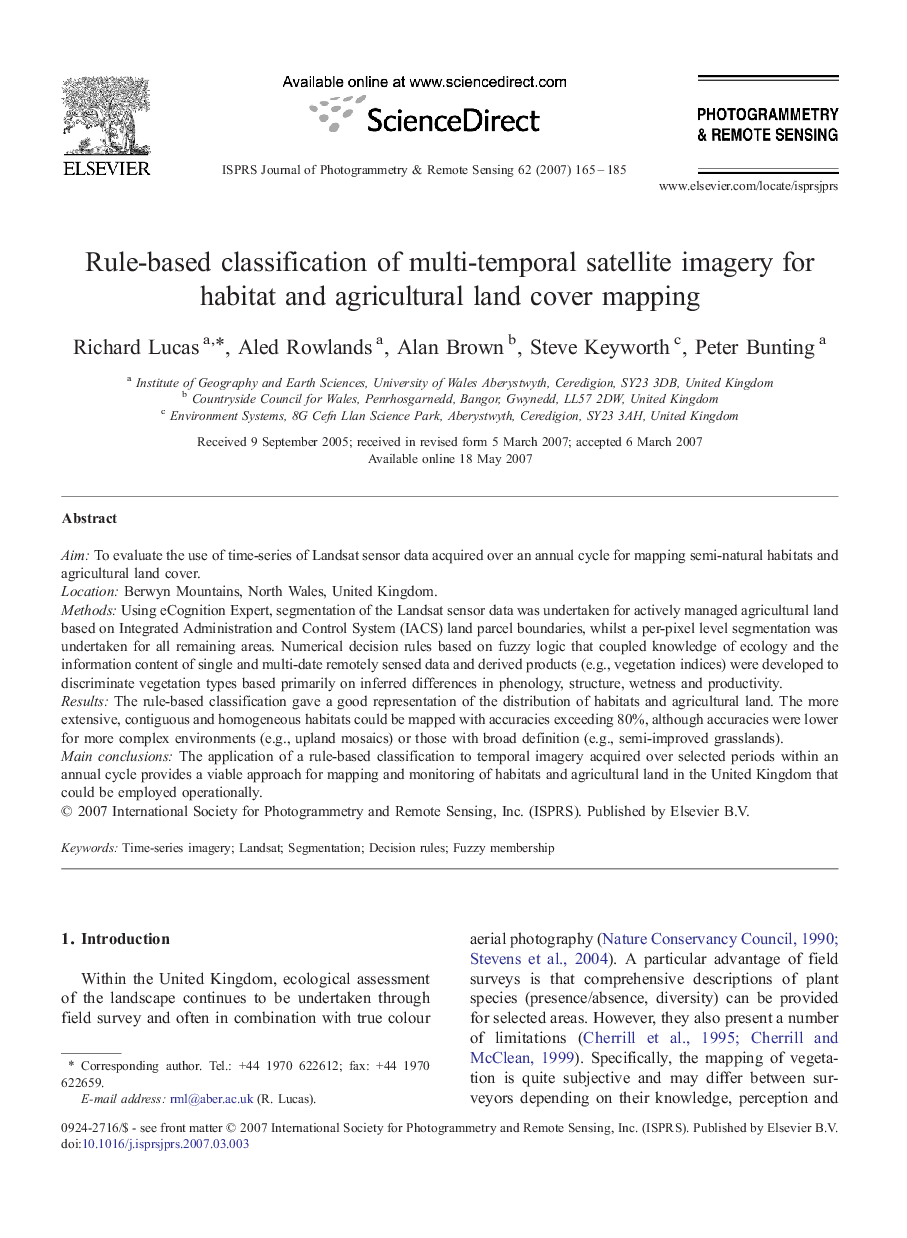| Article ID | Journal | Published Year | Pages | File Type |
|---|---|---|---|---|
| 557478 | ISPRS Journal of Photogrammetry and Remote Sensing | 2007 | 21 Pages |
AimTo evaluate the use of time-series of Landsat sensor data acquired over an annual cycle for mapping semi-natural habitats and agricultural land cover.LocationBerwyn Mountains, North Wales, United Kingdom.MethodsUsing eCognition Expert, segmentation of the Landsat sensor data was undertaken for actively managed agricultural land based on Integrated Administration and Control System (IACS) land parcel boundaries, whilst a per-pixel level segmentation was undertaken for all remaining areas. Numerical decision rules based on fuzzy logic that coupled knowledge of ecology and the information content of single and multi-date remotely sensed data and derived products (e.g., vegetation indices) were developed to discriminate vegetation types based primarily on inferred differences in phenology, structure, wetness and productivity.ResultsThe rule-based classification gave a good representation of the distribution of habitats and agricultural land. The more extensive, contiguous and homogeneous habitats could be mapped with accuracies exceeding 80%, although accuracies were lower for more complex environments (e.g., upland mosaics) or those with broad definition (e.g., semi-improved grasslands).Main conclusionsThe application of a rule-based classification to temporal imagery acquired over selected periods within an annual cycle provides a viable approach for mapping and monitoring of habitats and agricultural land in the United Kingdom that could be employed operationally.
